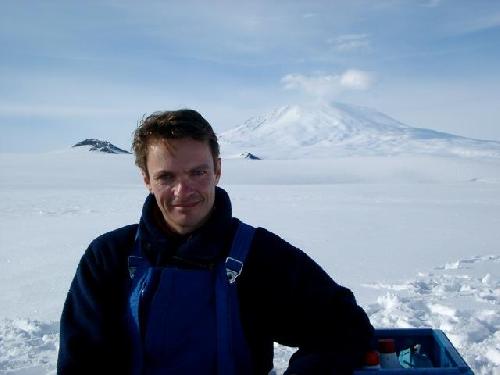AMHERST, Mass. - A new study from climate scientists Robert DeConto at the University of Massachusetts Amherst and David Pollard at Pennsylvania State University suggests that the most recent estimates by the Intergovernmental Panel on Climate Change for future sea-level rise over the next 100 years could be too low by almost a factor of two. Details appear in the current issue of Nature.
DeConto says, "This could spell disaster for many low-lying cities. For example, Boston could see more than 1.5 meters [about 5 feet] of sea-level rise in the next 100 years. But the good news is that an aggressive reduction in emissions will limit the risk of major Antarctic ice sheet retreat."
With mechanisms that were previously known but never incorporated in a model like this before, added to their ice-sheet model to consider the effects of surface melt water on the break-up of ice shelves and the collapse of vertical ice cliffs, the authors find that Antarctica has the potential to contribute greater than 1 meter (39 inches) of sea-level rise by the year 2100, and greater than 15 meters (49 feet) by 2500 if atmospheric emissions continue unabated. In this worst case scenario, atmospheric warming (rather than ocean warming) will soon become the dominant driver of ice loss.
 New climate modeling by Robert DeConto at UMass Amherst and David Pollard at Penn State suggests that the Intergovernmental Panel on Climate Change's most recent estimate for sea-level rise over the next 100 years could be too low by almost a factor of two. Credit: UMass Amherst
New climate modeling by Robert DeConto at UMass Amherst and David Pollard at Penn State suggests that the Intergovernmental Panel on Climate Change's most recent estimate for sea-level rise over the next 100 years could be too low by almost a factor of two. Credit: UMass Amherst
The revised estimate for sea-level rise comes from including new processes in the 3-dimensional ice sheet model, and testing them against past episodes of high sea-levels and ice retreat.
The researchers find that "ocean-driven melt is an important driver of Antarctic ice shelf retreat where warm water is in contact with shelves, but in high greenhouse-gas emissions scenarios, atmospheric warming soon overtakes the ocean as the dominant driver of Antarctic ice loss." Further, they find that if substantial amounts of ice are lost, the long thermal memory of the ocean that will inhibit the ice sheet's recovery for thousands of years after greenhouse-gas emissions are curtailed.
DeConto and Pollard's study was motivated by reconstructions of sea level rise during past warm periods including the previous inter-glacial (around 125,000 years ago) and earlier warm intervals like the Pliocene (around 3 million years ago). These high sea levels, ranging from a few meters to 20 meters above today, imply that the Antarctic Ice Sheet is highly sensitive to climate warming.
"So, at a time in the past when global average temperatures were only slightly warmer than today," says DeConto, "sea levels were much higher. Melting of the smaller Greenland Ice Sheet can only explain a fraction of this sea-level rise, most which must have been caused by retreat on Antarctica."
To investigate this, DeConto and Pollard developed a new ice sheet-climate model that includes "previously under-appreciated processes" that emphasize the importance of future atmospheric warming around Antarctica.
They explain that, "to date, research into Antarctic ice sheet vulnerability has focused on the role of the ocean, melting floating ice shelves from below. The ice shelves that fringe the land-based ice hold back the flow of inland ice to the ocean. However, it is often overlooked that the major ice shelves in the Ross and Weddell Seas and the many smaller shelves and ice tongues buttressing outlet glaciers are also vulnerable to atmospheric warming."
They add, "Today, summer temperatures approach or just exceed 0 degrees C. on many shelves, and due to their flat surfaces near sea level, little atmospheric warming would be needed to dramatically increase the areal extent of surface melting and summer rainfall."
"If protective ice shelves were suddenly lost in the vast areas around the Antarctic margin where reverse-sloping bedrock (where the bed on which the ice sheet sits deepens toward the continental interior, rather than toward the ocean) is more than 1,000 meters deep, exposed grounding line ice cliffs would quickly succumb to structural failure as is happening in the few places where such conditions exist today," the researchers point out.
source: University of Massachusetts at Amherst